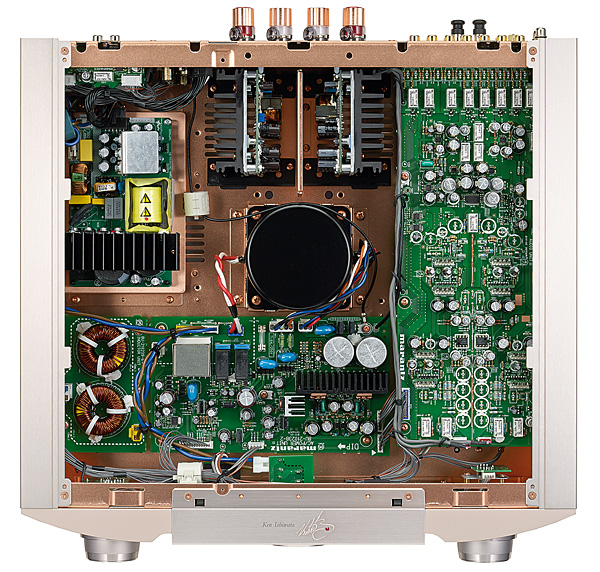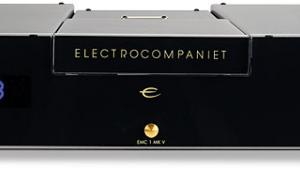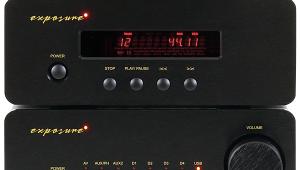Marantz SA-KI/PM-KI Ruby SACD Player/Amplifier Page 2
![]() Ken's Character
Ken's Character
Whether listening to the player and amplifier separately or as a system, it's not hard to hear the 'Ishiwata sound' in action. Used with the excellent Neat Iota Xplorer speakers [HFN Jul '18], the immediate impression is one of direct connection with the music being played, whether that be a chamber recital or small jazz ensemble, or a full-blooded orchestral or rock recording.
There's nothing upfront, overt or flashy going on here: instead the duo lets the music do the talking, wrapping it up in a presentation that's rich and yet crisply detailed, making it equally suited for relaxing listening or concentrated attention. Extensive listening has long been an inherent part of the Marantz design process and that's not hard to discern from the way this pair handles a huge range of musical genres.
On initial acquaintance the sound of the player/amp duet may seem very lush and warm, so weighty is the bass it delivers. That's what promotes the ease of listening, especially with the generous sound of the classic Eagles albums in the recent Legacy retrospective [Rhino 0081227932466] – and no, I don't just mean Hell Freezes Over! It succeeds in revealing all parts of a recording in remarkable detail, yet somehow keeps all that subservient to conveying the atmosphere and emotion of what's being performed.
So there's never a sense of artifice about the sound of the Marantz pairing. Instead, it just gets on with playing the music in a manner that's as satisfying as it's accomplished. Yes, you can brighten things up – provided you're not playing SACDs or DSD files – if you'd like them a bit more hi-fi-like by choosing Marantz's Filter 2, but with that in place that hint of artificiality creeps in. I'd stick with the default Filter 1.
 Hard Slammin'
Hard Slammin'
For all the purity and poise these KI Rubys show, don't think for a moment that they can't rock out, as a blast with The Prodigy's No Tourists set [Take Me To The Hospital 405053 8426267] demonstrates; the ability of the PM-KI Ruby to slam hard while keeping clean is never in doubt, and it works well with the player to open up the layers of what could charitably be called a somewhat dense mix.
The recent Roger Waters-narrated version of Stravinsky's The Soldier's Tale [Sony 19075872732] could also be said to benefit from the open, informative sound of the Marantz pairing if it wasn't for the fact that this ability reveals not just the trite nature of the Waters-rewritten narration – which really didn't need rewriting in the first place – and the toe-curling effect of the performer's 'acting'. Pantomime accents, anyone?
With the rather more fulfilling performance of Borodin's 'Polovtsian Dances' [BFO/Fischer; Channel Classics CCS SA37016], the Marantz sound comes into its own with that lovely blend of richness and finesse that's the brand's hallmark. There's no effort in the way the broad, deep soundstage is created, nor in the positioning of the considerable orchestral and choral forces within it, which has both scale and focus, and the overall effect is to draw you into the music and help the entire system disappear.
Virtual And Physical
What's more, the Marantz system is as impressive whether you play CD/SACD discs on the SA-KI Ruby or connect music in via the USB-B port, working very well with one of my Macs running Audirvana or Roon to deliver a sound indistinguishable from 'physical media' – and in fact better when some really hi-res files were served up.

The phono stage, too, maintains this impression of quality, and has evidently been designed with a real ear for making the most of any kind of music. Whether I played the Dunedin Consort's Handel's Messiah [CKH312] on my trusty Rega Planar 2, in which the combination evoked both the scale and intimacy of the performance, or some vintage live '70s rock in the form of Be Bop Deluxe's Live! In The Air Age [Harvest SHVL 816], there were striking levels of detail combined with that fluidity. And with the live album the gutsy, yet fleet-footed bass was very much in evidence.
This Is It...
Finally, to the immediacy of John Scofield's Combo 66 set [Decca France 96kHz/24-bit download], where this Marantz pairing really sank its teeth into the remarkably rendered instrumentation, from the fuzzed-out guitar through the swirling organ, with the metronomonic bass playing off the inventive drumming. Anyone after a 'close your eyes and see the musicians' experience would discover this was it, the Marantzes not putting a foot wrong, and an absolutely solid three-dimensional image being conjured.
Great musicians, fine playing and a superb sound – if you ever wanted an illustration of that familiar Marantz 'Because Music Matters' line, and what Ken Ishiwata strives to achieve in the company's products, this is a pretty good way to grasp the principles.
Hi-Fi News Verdict
Not just noteworthy in their own right, these two components gel together to create a sound that's pure 'Marantz'. Appealing to a wide range of listeners, there's no sense of a celebratory rosy red glow that might otherwise embellish the sound of disc player or amplifier. They will surely be snapped up by Marantz fans and collectors, but their performance will delight even without the halo of their backstory.
























































